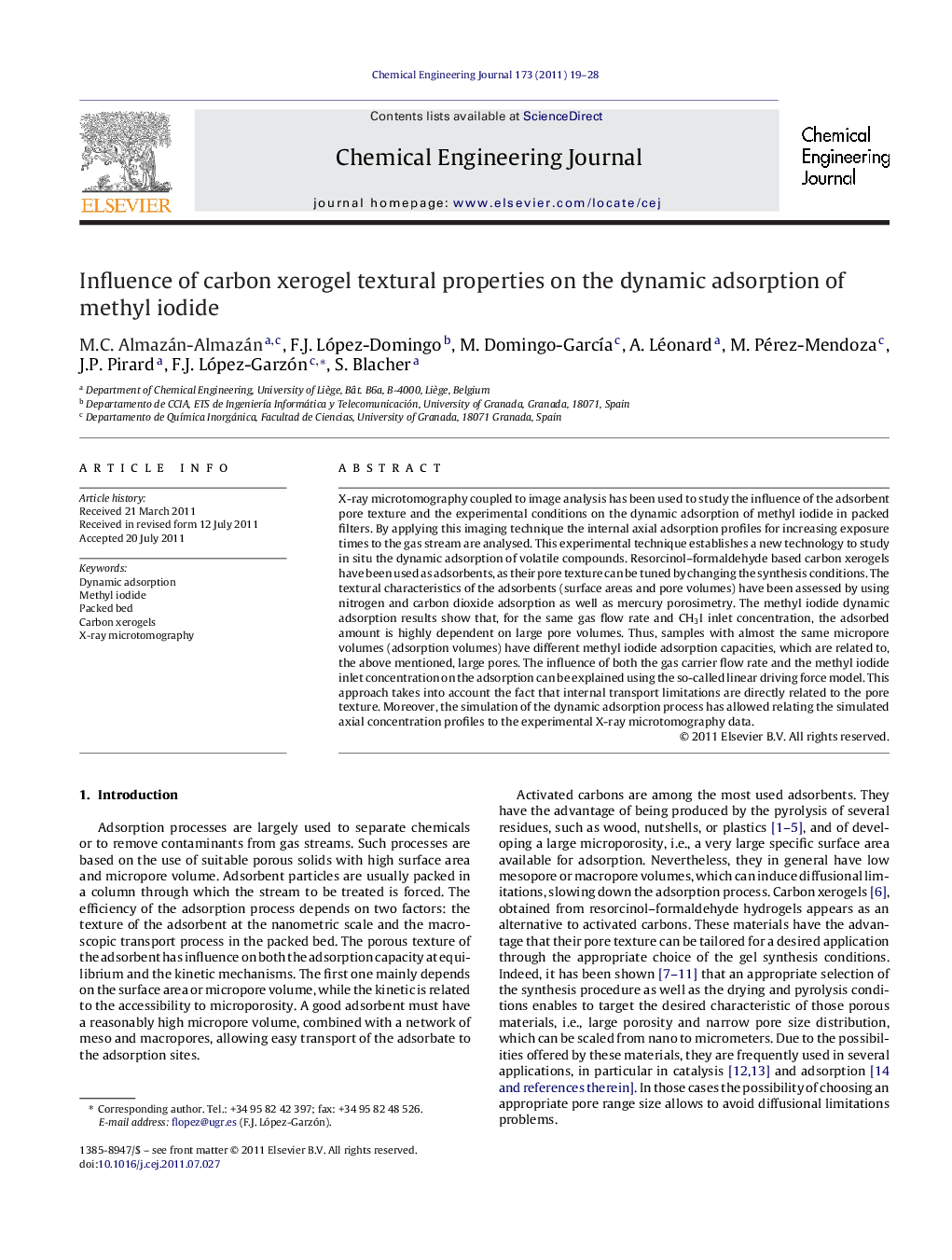| Article ID | Journal | Published Year | Pages | File Type |
|---|---|---|---|---|
| 150631 | Chemical Engineering Journal | 2011 | 10 Pages |
X-ray microtomography coupled to image analysis has been used to study the influence of the adsorbent pore texture and the experimental conditions on the dynamic adsorption of methyl iodide in packed filters. By applying this imaging technique the internal axial adsorption profiles for increasing exposure times to the gas stream are analysed. This experimental technique establishes a new technology to study in situ the dynamic adsorption of volatile compounds. Resorcinol–formaldehyde based carbon xerogels have been used as adsorbents, as their pore texture can be tuned by changing the synthesis conditions. The textural characteristics of the adsorbents (surface areas and pore volumes) have been assessed by using nitrogen and carbon dioxide adsorption as well as mercury porosimetry. The methyl iodide dynamic adsorption results show that, for the same gas flow rate and CH3I inlet concentration, the adsorbed amount is highly dependent on large pore volumes. Thus, samples with almost the same micropore volumes (adsorption volumes) have different methyl iodide adsorption capacities, which are related to, the above mentioned, large pores. The influence of both the gas carrier flow rate and the methyl iodide inlet concentration on the adsorption can be explained using the so-called linear driving force model. This approach takes into account the fact that internal transport limitations are directly related to the pore texture. Moreover, the simulation of the dynamic adsorption process has allowed relating the simulated axial concentration profiles to the experimental X-ray microtomography data.
► The relevance of large pores (macro and mesopores) on the dynamic adsorption of methyl iodide is pointed out. ► X-ray microtomography is a useful technique to follow in situ the vapor dynamic adsorption. ► This technique has been validated by simulation of the process.
